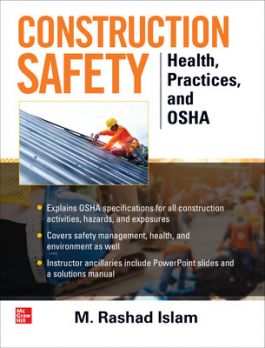Covid-19 has a silver lining. The overlap and interplay of health protection were people work, live, and play is being upgraded. This is an opportune time to demonstrate your skills to move “beyond OSHA” for those that see advantages in this direction.
Enter the experts
The IHG® brand of hotel properties introduced in June 2020 the “IHG Promise.” If your room is not up to cleanliness standards, the hotel promises to “make it right.” IHG teamed with medical experts from Cleveland Clinic to “translate clinical, infectious disease management, and overall health optimization” to achieve cleanliness concepts.
The National Association of Theatre Owners introduced in August 2020 their “CinemaSafe” guidelines to help ensure employee and patron health during the movie experience. Epidemiologists from George Washington’s Milken Institute School of Public Health and the Medical College of Wisconsin helped develop CinemaSafe. Guidelines include that theater owners should hire an HVAC expert, “such as an industrial hygienist” to assess and optimize airflow and air exchange.
Health expertise is now being added to the C-suite of leading corporations. Tyson Foods Inc. and the Royal Caribbean Group, for example, created new “Chief Medical Officer” positions in July 2020. Along with the new CMO position, Tyson plans to hire and place 200 nurses at company worksites. Tyson’s 2021 annual OHS plans most likely will address workplace health beyond Covid-19 concerns.
Annual plan refresher
OHS annual plans were first established as a calendar to identify when an OHS activity would occur each year. Quantity and quality measurements applied to activities help determine year-over-year improvements, or not – that often serves as an essential supervisor tool during an OHS pro’s annual performance evaluation. Annual plans often evolve to support budgets, integrate into plans from other business units such as HR and purchasing, and support other uses such as requirements for ISO 45001 certification. Objectives for annual OHS plans, therefore, include “what gets measured, gets done,” seek continual improvement to reduce employee injury and illness, and advance professional growth.
Future OHS plans
OHS annual plans have historically leaned heavily toward OSHA requirements and injury prevention as opposed to health concerns that may extend to family, community, and even global health challenges. Pre-Covid “normal” in the U.S. may not occur until 2022. As such, Covid-19 worksite activities in 2021 may serve as a gateway for senior management to expect broader health activities in OHS annual plans. But how does the OHS pro add more to their full-plate and not get penalized if there’s not sufficient time to get things done properly?
Low hanging fruit
AIHA® and the Center for Safety & Health Sustainability released the September 2020 Guidance Document: “Best Practice Guide for Leading Health Metrics in Occupational Health and Safety Programs.” Available online, “This document may be freely distributed to any interested party in full without changes or modifications without restrictions.” In addition to providing numerous examples of health-related metrics/metric concepts, the document describes how organizations may create their own health metrics and provides list of resources to assist with this task.
Looking for low-hanging fruit within the AIHA best practice health metrics is a good strategy. Most likely you will find many health activities that you do, or support being done, but you do not take credit for the activity.
AIHA’s health metrics, for example, include “% planned qualitative exposure assessments completed.” Qualitative exposure assessment is where you use your judgement, but without measurements, to determine that health is not jeopardized. An employee briefly using a small amount of spray paint in an open area is an example. With minimal effort you could establish and achieve 100% of this goal easily. This is but one of many similar examples.
Healthy People 2030
The U.S. Department of Health & Human Services, Office of Disease Prevention and Health Promotion, established “Healthy People” priority objectives by decades, beginning with Healthy People 1990. Healthy People 2030 takes on great importance in the Covid-19 world.
Healthy People 2030 website provides an abundant wealth of information, tools, and health metrics to enhance any OHS annual plan. OHS pros unfamiliar with the Healthy People 2030 website should first read the two-page summary “What is the Healthy People 2030 framework.” Next, review the one-page graphic “How can I use Healthy People 2030 in my work.”
Once the basics are understood, browse Healthy People 2030 objectives by: Health Conditions; Health Behaviors; Populations; Settings and Systems; and Social Determinants of Health. Workforce, for example, is found within the Populations objectives and Workplace is found within the Settings and Systems objectives. There are over forty Workgroups comprised of subject matter experts, such as the Occupational Safety and Health Workgroup, that have established 355 core – or measurable - objectives within Healthy People 2030.
Low-hanging metrics
AIHA’s best practice health metrics, there is value in finding low-hanging metrics within Healthy People 2030 that you may include in your company’s 2021 OHS plans. Be aware, there is significant overlap and interplay among all Healthy People 2030 objectives. Do not limit your consideration to just Workforce and Workplace. Consider metrics found in Environmental Health, Emergency Preparedness, and other objectives.
Neighborhood and Built Environment objectives within Healthy People 2030, for example, includes the metric: “Increase the proportion of schools with policies and practices that promote health and safety.” Objectives for OHS annual plans include advance professional growth. Volunteering some of your time during 2021 to talk with students in schools near your workplace about OHS may be looked very favorably by your senior management. Even if its just one school and less than one hour talking, it may be a valuable low hanging health metric upon which you may claim credit.
Conclusion
Because of Covid-19, health beyond OSHA is receiving great attention from stakeholders, including senior business managers. Including low-hanging health metrics into annual OHS plans has many values including advancing professional growth. Use of health metrics that come from reputable and recognized sources such as AIHA® and HHS’s Healthy People 2030 adds legitimacy to the process.










.jpg?t=1721257160)